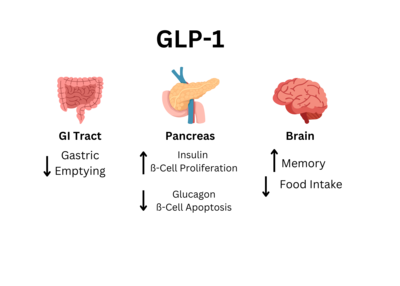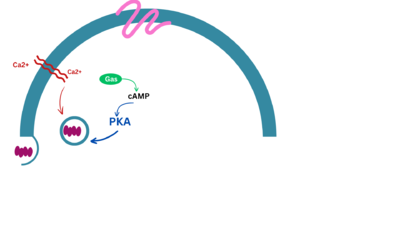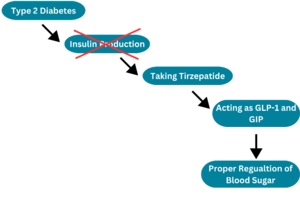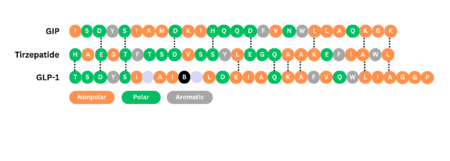User:Lily Lindemann/Sandbox1
From Proteopedia
Glucagon-Like Peptide 1 Receptor (GLP1-R)
Introduction
Glucagon-Like Peptide 1 Receptor or GLP1-R uses the glucagon-like peptide to signal the body to secrete insulin and inhibit glucagon secretion. When glucose levels in the blood rise (usually after consuming food), GLP-1R activates,
creating a signaling cascade to signal cAMP. After the signaling cascade, the final result is the secretion of insulin
to the rest of the body. Discovered in 1990s while trying to understand the mechanism of GLP-1 action. [1]
The structure was determined using cryogenic electron microscopy.
Function
DiseaseDiabetes and ObesityType II Diabetes is when the pancreas does not produce enough insulin for the body.[2] This in turn makes the blood glucose level dangerously low. When the sugar levels in our blood become too low people can become dizzy and tired. On the other hand, when blood sugar levels become too high then can become feverish and sick.
Ligand and Receptor InteractionsHormone Interactions
The ligand uses (tryptophan) and hydrophilic interactions to dock into the receptor. Drug InteractionsThe drug antagonist is shown in a mint color while the receptor is shown in pink. The interaction between Tirzepetide and the receptor are of the tryptophan residues and in the N terminus of the drug sequence. RelevanceTirzepatide and other GLP-1R related antagonist drugs help to regulate blood glucose levels.[3] Although these drugs can make remarkable changes, the long term effects of GLP-1R related drugs are unknown. There have been some hints toward thyroid cancers but this was only shown in mice during trial periods.
References
| ||||||||||||




